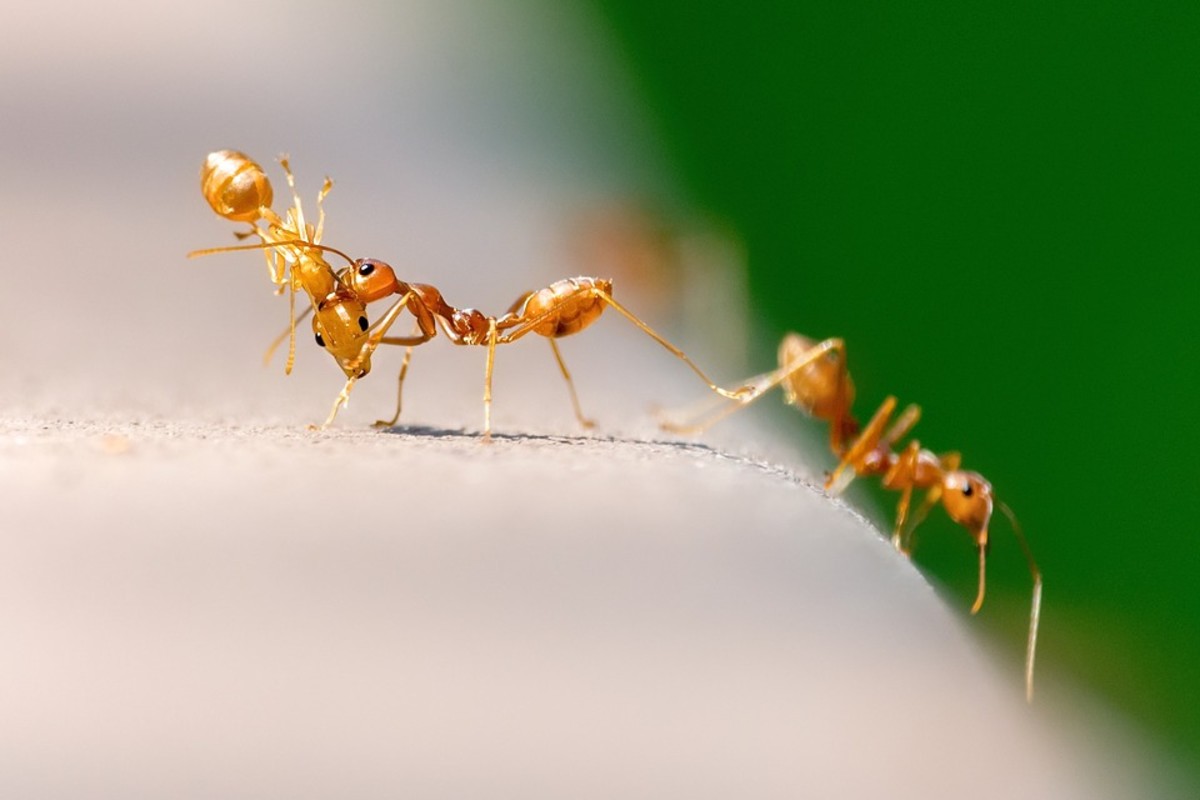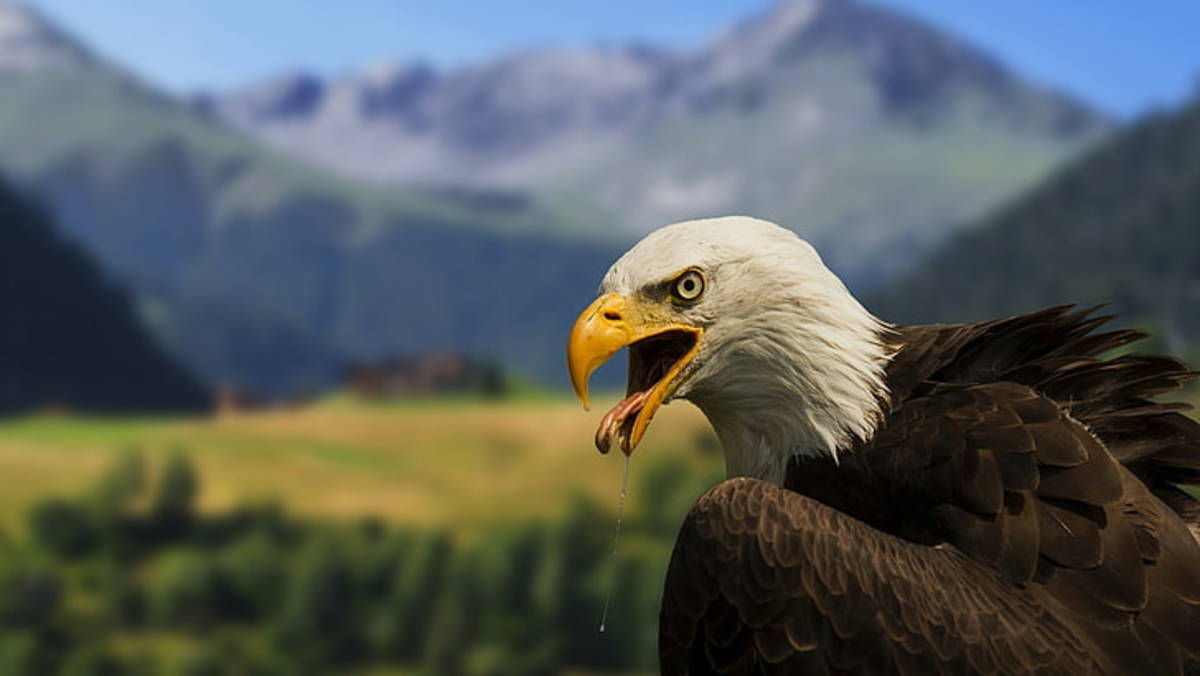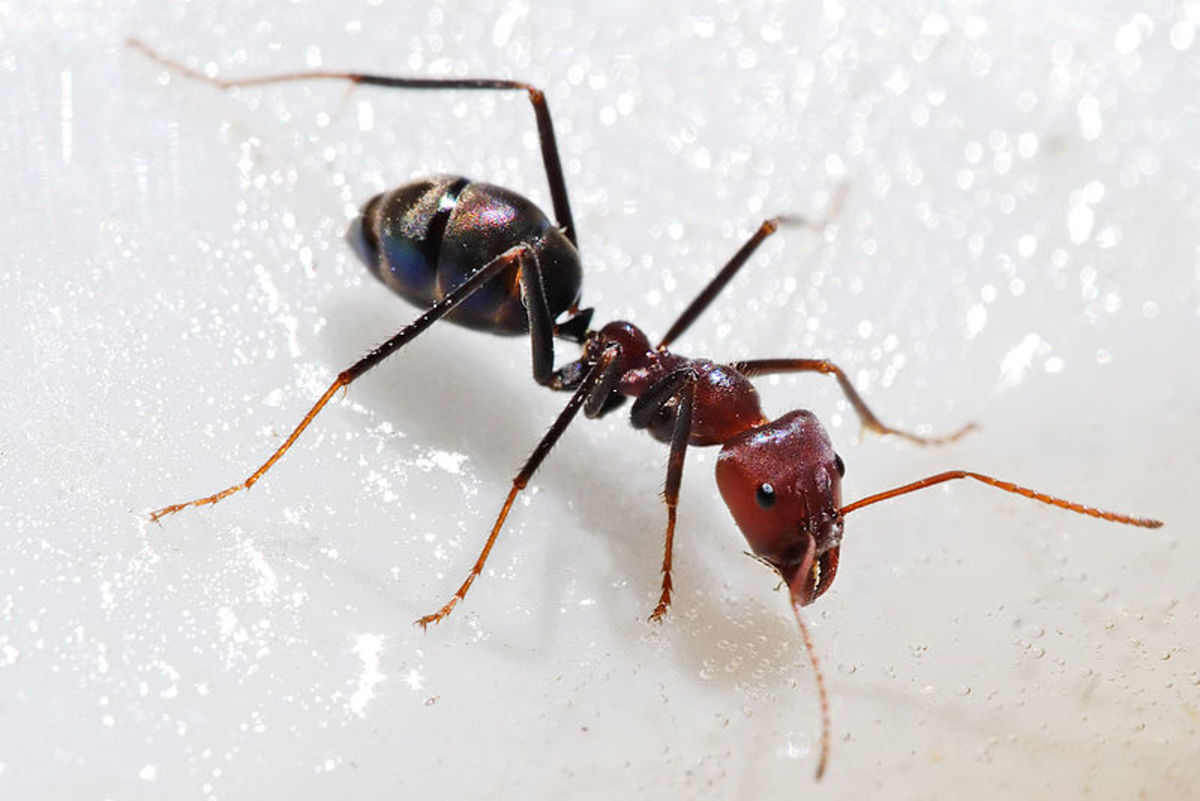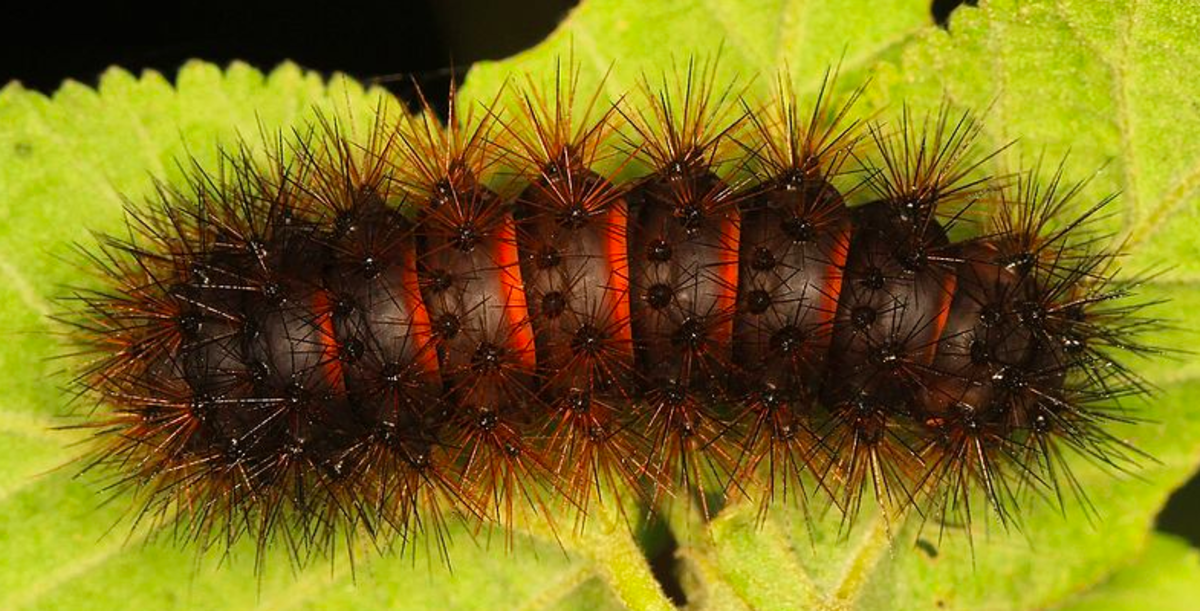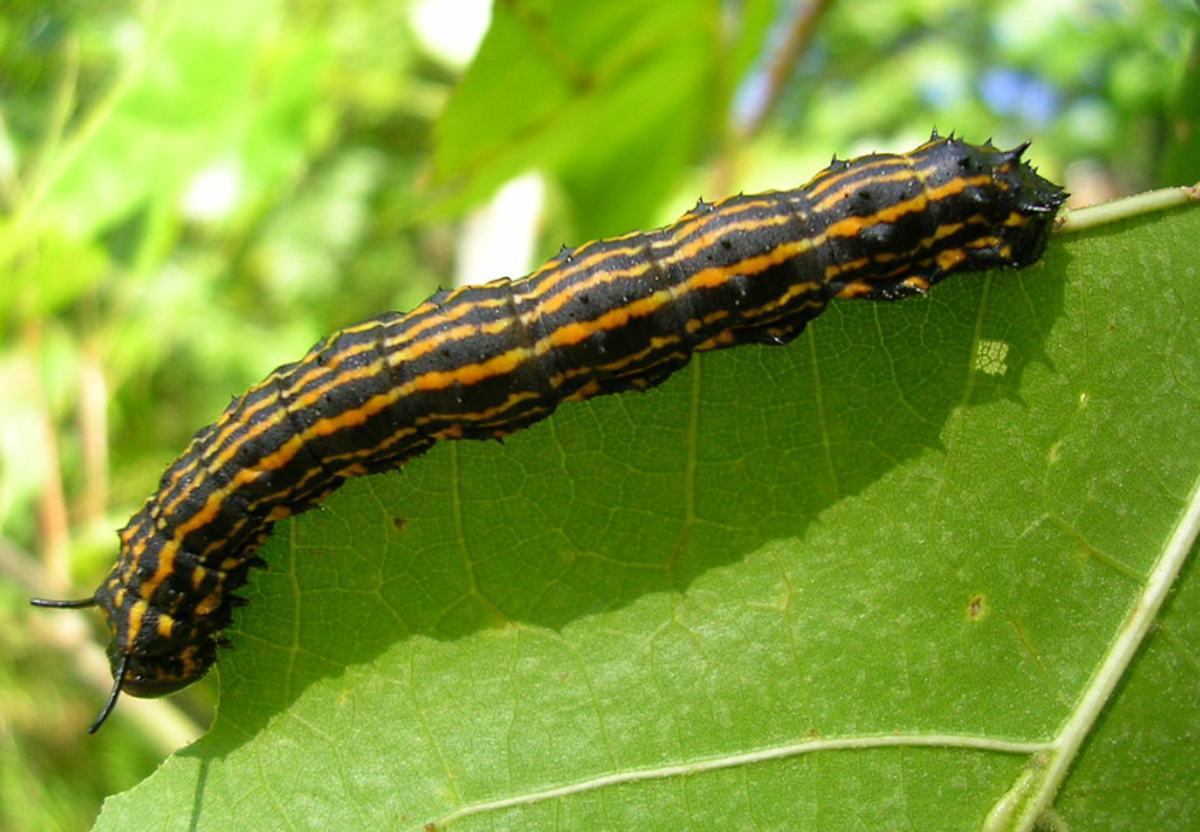- HubPages»
- Education and Science»
- Life Sciences»
- Entomology»
- Insects & Bugs
Amazing Ants:top 5 Interesting Facts About These Strong, Tiny Creatures That Work Better as a Community Than Most Humans
Ants are amazing creatures, with a complex, cooperative society that has enabled them to thrive all over the world no matter the changing conditions of the Earth.
They have been here for over 130 million years, and therefore survived the extinction of the dinosaurs. They live pretty much everywhere on the Earth surface, and with around 20,000 species of ants, they can be considered to be on of Earth's most successful species.
Many of us have had the displeasure of having our homes infested with these tiny creatures; it doesn't matter how many you kill either, they always come back for more. This fact alone shows what vast colonies they live in, and this is nothing compared to the size of unchecked colonies.
In this hub I will let you know five truly outstanding facts about ants that I believe show that ants are truly amazing creatures.
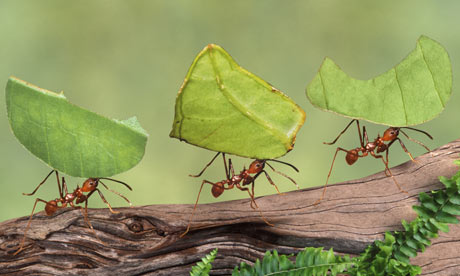
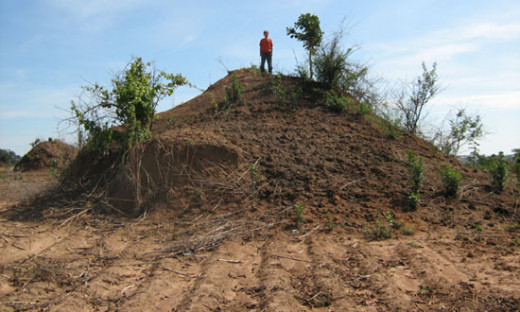
5. Supercolonies can span miles
We all know that ant colonies have thousands upon thousands of ants living there. Anyone who had a colonie living close to their home will testify that, but some colonies, which are left unchecked and away from human intervention, can stretch for miles.
Super-colonies have been found from Europe to Asia to the American continents. This shows that ants can become a dominant species in the correct environment.
Ants normally form colonies with one nest and one queen. Usually nests are isolated, with one queen laying eggs that end up as workers. At certain times of the year the queen lays eggs that turn into queens. They then leave the colony to build new ones for themselves. However, to form a super colony the ants have several nests and several queens all working together to spread over a larger area and eliminating other 'weaker' colonies of ants.
This social behaviour is very rare, especially amongst insect species. When nests become full, one of the queens take a group of workers and exits the colony. They then walk a relatively short distance and form a new nest. However, this becomes part of the same colony, and therefore it enlarges and allows the ants to expand the area that they use.
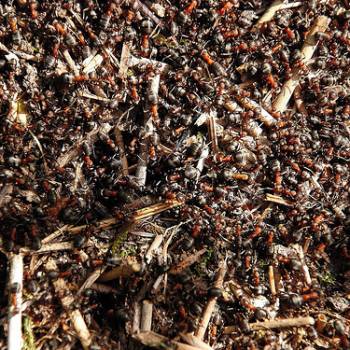
This interaction and super size colonies defies what we think we know about evolution though:
Doctor Pedersen, from the Department of Biology at the University of Copenhagen states that, "It looks as if the ants defy evolution, and we're eager to figure out how that's even possible. According to the laws of evolution, you only need to help out your relatives, but we're seeing ant colonies so big that all the ants cannot possibly be related. So why are they helping one another? That's what we're trying to figure out."
"We have no trouble with understanding how evolution has created the classic ant colony. The workers work for their queen. It gets a bit trickier to understand when the workers work for other ants, as it is done in super-colonies." He continued.
Working together to help the colony defend itself and feed too, makes very good sense. The gene pool would be conserved then and with everyone working together and having specific jobs helps that survival. A lot of species survive through numbers, but few have the work ethic and cooperativeness like ants do.
Argentina ants spread across the world
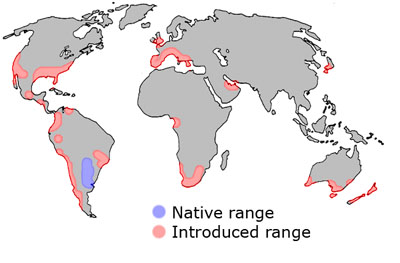
Colonies can grow at incredible speed:
It has been recorded that super-colonies have grown up to 30 metres diameter around the centre of the colony in any one year. This could be pictured as building the equivalent of New York each year, with everyone packed a lot closer in. Every square meter can home an individual nest. A nest the size of 6000 km has been recorded, a growth over many years.
"Unless there are geographic obstructions in the way, these super-colonies can just continue to grow, as it exemplified by a colony that stretches 6000 km along the Mediterranean. That's the largest cooperative unit in the animal kingdom." Doctor Pedersen said. "Up to now the ants have been showing an extreme form of social behaviour; we're interested in seeing whether evolution will set a limit on how social a creature can get."
Scientists believe that super-colonies originated in Argentina and have spread across the world through natural movement or by human intervention, even if this wasn't always their intent - i.e. shipping across the world and the ants being stowaways.
Although the many ants do not pose a risk to humans, they can have devastating consequences for other species as they can often become the dominant species in an area. Ecosystems can become effected as other ant species or other insects are eliminated which causes a problem further up the food chain as food supplies disappear.
We have much to learn from ants and how their society works. With our knowledge as it is, super-colonies shouldn't exist, so how do so many animals exist in such tight confines and still work together. Just image what humans could achieve if we could act like this!
Inside the ant colony
4. Farming wasn't invented by humans!
Ants have been using farming to feed their colonies for over 70 million years. Humans hadn't even evolved by then and dinosaurs were considered the dominant creature to roam Earth in the early Tertiary period.
These amazing creatures farm fungus' or even other animals to feed their colonies using some very clever ways:
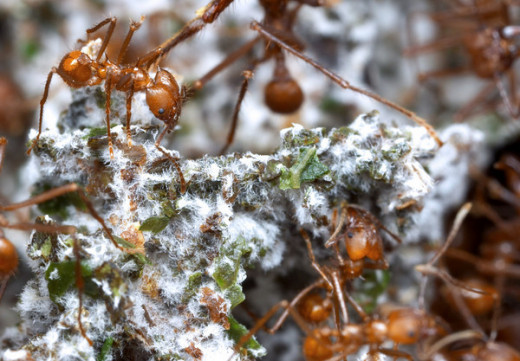
Fungus:
The best known fungus farmers are the 'leaf cutter ants.' These amazing animals take leaves into their colonies, not using them for a food source but they grow fungus on them. This fungus is then used to feed the colony.
These farming methods are that good that they are being studied by scientists to help develop and improve human agriculture around the world.
"Agriculture is very rare in the animal world. We only know of four animal groups that have discovered agriculture: ants, termites, bark beetles and humans. By studying certain fungus-growing ants, which our study indicates are almost like 'living fossils,' we might be able to better understand steps involved in the evolution of ant agriculture." A leading scientist in the natural history museum, Mr Brady commented.
Scientists discovered that many of the 91 speciest that farm fungus originated from one common ancestor that is thought to be the first farmer on Earth 70 million years ago.
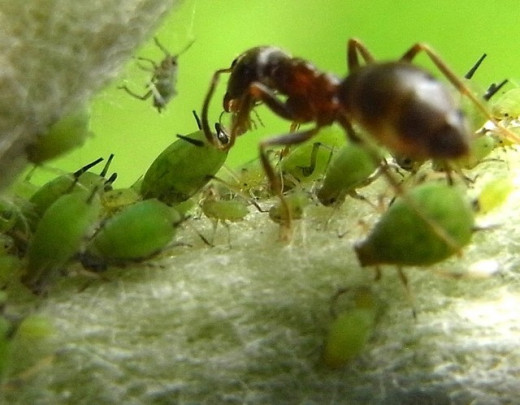
Aphids
Aphids are kept in ant colonies not for food themselves but for the sugary secretions, which is excreted by aphids when they eat plants, that ants do love to eat. The ants who farm these animals, have chemicals which are exerted from their feet that tranquilise aphids. This allows the ants to keep them subdued and close by to be able to look after their food source.
The ants bite off the wings of the aphids to stop them from leaving the colony. They also use chemical footprints, that are used by ants as a mark of territory, is also used to manipulate the aphid colony. Research showed that aphids move a lot slower and are a lot more lethargic when exposed to this chemical, compared to when they are not.
"We believe that ants could use the tranquillising chemicals in their footprints to maintaiin a populous 'farm' of aphids close to their colony, to provide honeydew on tap. Ants have even been known to occasionally eat some of the aphids themselves, so subduing them in this way is obviously a great way to keep renewable honeydew and prey easily available." Professor Vincent Jansen said.
"There are some definite advantages for aphids being 'farmed' like this by ants for their honeydew. Ants have been documented attacking and fighting off ladybirds and other predators that have tried to eat their aphids. It's possible that the aphids are using this chemical footprint as a way of staying within the protection of the ants." Professor Jansen continued. "Although both parties benefit from this interaction, this research shows is that all is not well in the world of aphids and ants. The aphids are manipulated to their disadvantage: for aphids the ants are a dangerous liaison."
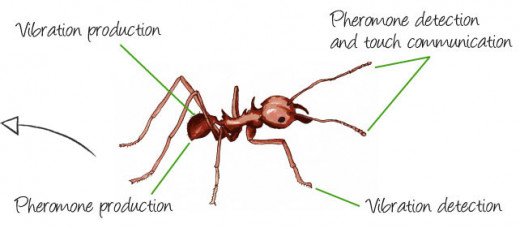
3. Ants communicate
Ants communicate in a number of ways. This helps their societies to thrive and even dominate in certain parts of the world.
Communication by sound, touch and chemicals are all used by ants.
Using sound:
Studies have found that even ant larvae can communicate via sound. Some species of ant have a spike on their abdomen which is stroked by the ant and this makes a noise similar to dragging the teeth of a comb back and letting go. This is used for a distress call when attacked by predators. Larvae can use this distress call like a baby once their outer shell has harded although it is a much softer sound.
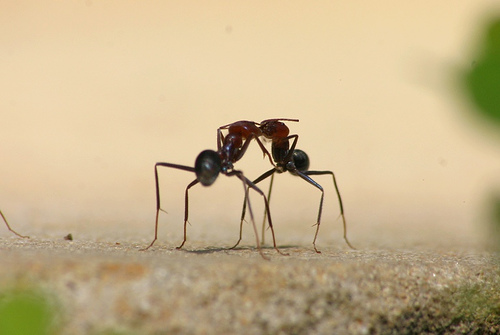
Using touch:
Communicating with touch is another important way ants communicate. The most common way ants do this is by stroking each others antennae. Other messages are passed on by waggling, jerking and dancing that seems to pass on various messages to fellow workers.
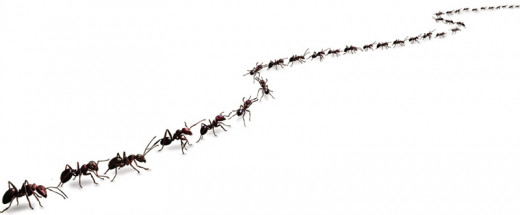
Using chemicals:
Pheromones are used throughout nature. To attract mates and to define a terrotory but ants do take pheromones to a new (or old, because of how long they have used it!) level.
First, a scout leaves the colony and wonder around randomly until they discover food. It then consumes some of this edible matter and return to the colony in as straight a line as possible, laying a trail of pheromones to allow workers to follow and gather food. They use the same trail to take the food back to the colony once it has been gathered. These workers will continue to walk back and forth along this line until the food source has been depleted, adding more pheromones as they go to keep the trail fresh for others to follow.
The pheromones are also used to identify an ants colony, and that of an enemy colony. If an enemy colony is found then ants tend to attack them; they use a pheromone trial to find it again.
It is also a way to farm aphids.
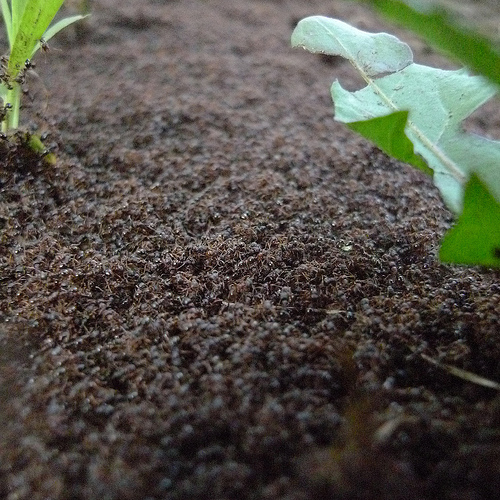
2. A quarter of the mass of all animals is made of ants
Ants are tiny creatures and yet scientists estimate that the biomass of all the creatures on the Earth is made of of them. They actually go further than that and say that the total biomass of ants is the equivalent to that of Humans on the Earth.
With ants being so tiny it means that there are more ants on this Earth than every other creature added up. A single acre of the Amazon rainforest is said to have around 3.5 million ants alone. And ants have conolnised every continent on the Earth apart from the poles.
Humans on the Earth total around 7 billion (7,000,000,000) but this is nothing compared to 10 million, billion of ants (10,000,000,000,000,000). So yes they are tiny, but with so many of them makes up a very large proportion of the mass of all life on Earth.
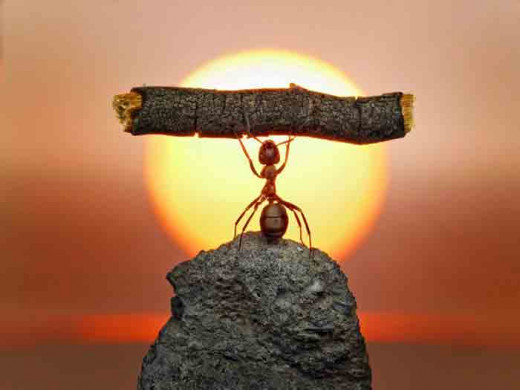
1. Ants are far stronger than any Human!
Relative to their size, ants muscles are thicker than those of larger animals, which included humans. This allows them to lift and carry objects 50 times their own body weight. If we had similar strength, compared to our sizes, then we would be able to lift a small car over our heads.
I remember when I went to the gym and was told that any person should be able to life their own body mass when lifting weights. This is something a lot of people struggle with, let alone 50 times their own body mass.
Ants and Humans have many similarities
Ant society is divided into differnet jobs: labour, communication, problem solver, nurses and of course the reproducers. The parallels with human society are there to see for anyone who studies ants.
Other interesting facts about ants include:
- Ant colonies range in size from small predatory individuals to massive conlonies with millions of individuals.
- Ants communicate with each other with a variety of ways, chemical, sound and touch.
- Queens are the head of the communities, with workers at the bottom of the rung.
- Male ants have one role - to mate. After they have performed they often die.
- Over 20,000 species of ants are known on Earth.
- Ants can carry around 500mg (50 times there own body weight)
- Using force of numbers, ants can attack much larger animals like birds, small mammals and reptiles.
- It is thought that ants first originated on Earth at the same time as flowering plants - around 130 million years ago. (Humans have been here for 2 million)

